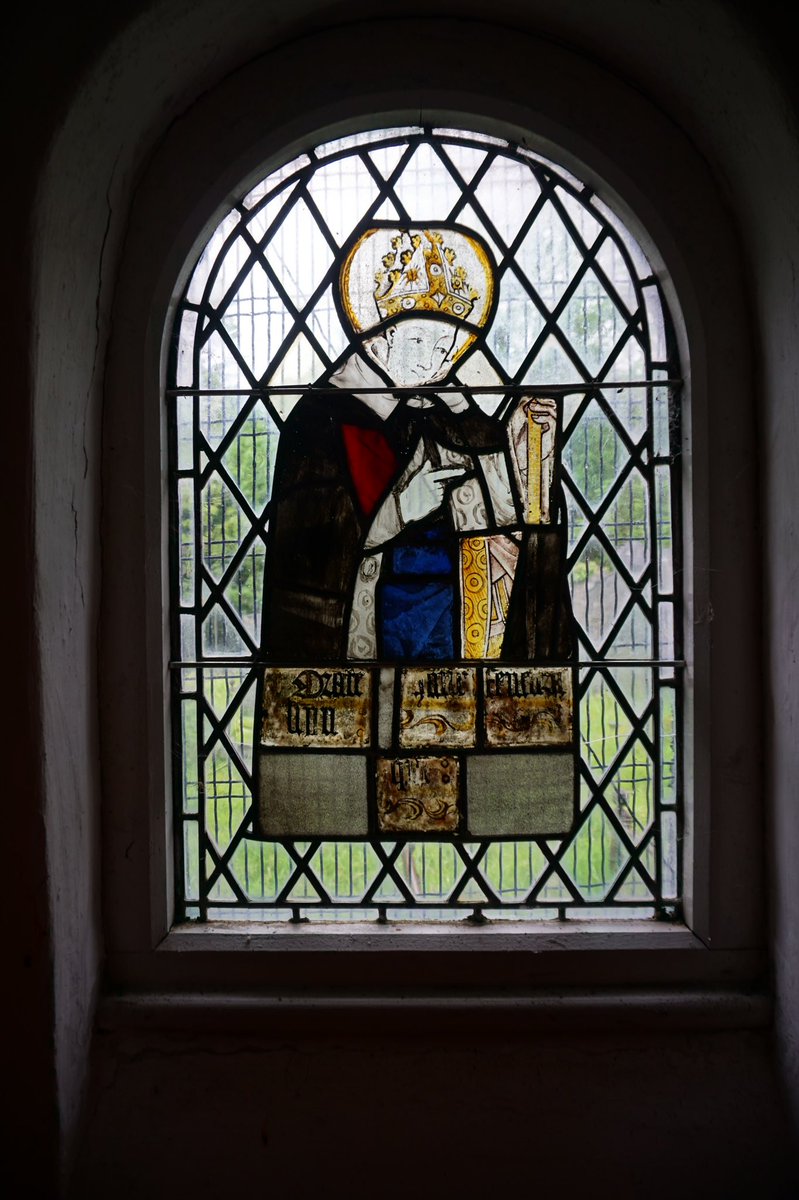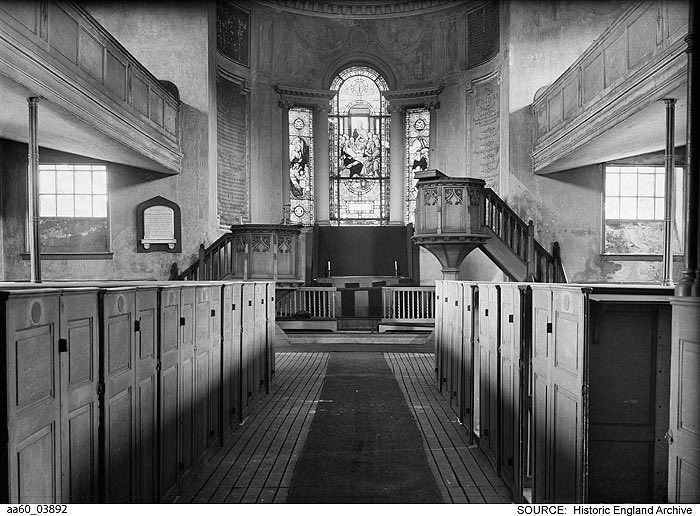
At St Beuno's in Penmorfa, Gwynedd, a fragment of 16th century stained glass remains in a window on the west wall. In 1905, it piqued the curiosity of Charles E Breese — a local solicitor, Liberal politician and antiquarian … 

Breese learned that until about the 1860s it had been a part of a larger window on the east wall, which was known, from its inscription, to have commemorated Maredudd ab Ifan ab Robert (aka Meredith ap Ivan ap Robert, or Meredith Wynn) and his third wife, Margaret Maurice. 

Meredith, the founder of the influential Wynn(e) family, was said to have fathered 20 children and to go everywhere with a personal bodyguard of 20 tall bowmen.
After Margaret died, Meredith went on to have fourth and fifth wives (and possibly some concubines)! So Breese concluded that the window wasn’t a memorial installed after his death, but must have been made during his marriage to Margaret, circa 1500-1510.
Meredith ap Ivan ap Robert lived at Dolwyddelan Castle and rebuilt Gwdyr Castle. When he died in 1525 he was buried at the church he had built at Dolwyddelan — St Gwyddelan's — where you can see another stained glass window dedicated to his memory.
According to a Wynne descendant, Penmorfa's window originally included very unusual stained glass 'pictures' of the noble couple.
Meredith travelled to Rome twice and it's thought that the beautiful coloured glass windows he saw there inspired him to bring the art to Wales.
Meredith travelled to Rome twice and it's thought that the beautiful coloured glass windows he saw there inspired him to bring the art to Wales.
However, the glass portraits are long gone, and the only picture fragment that remains from the window depicts a mysterious ecclesiastical figure.
So, who was he?
One theory is that he represents St Beuno.
So, who was he?
One theory is that he represents St Beuno.

However, Breese scoffed at that idea: "It is scarcely credible that an artist of the fifteenth or sixteenth century would so far have forgotten the incongruities of appearances as to clothe a seventh-century worthy in the paraphernalia of a high ecclesiastic of his own period!" 

For now, the identity of this figure remains an enigma …
—/
Learn more about St Beuno’s, Penmorfa and its wonderful range of stained glass:
friendsoffriendlesschurches.org.uk/church/st-beun…
—/
Learn more about St Beuno’s, Penmorfa and its wonderful range of stained glass:
friendsoffriendlesschurches.org.uk/church/st-beun…
• • •
Missing some Tweet in this thread? You can try to
force a refresh






















